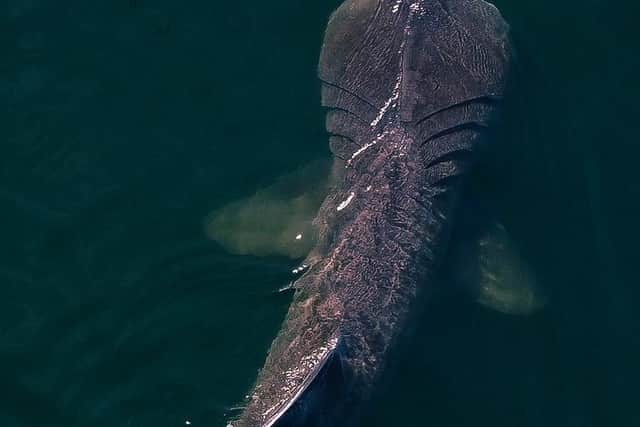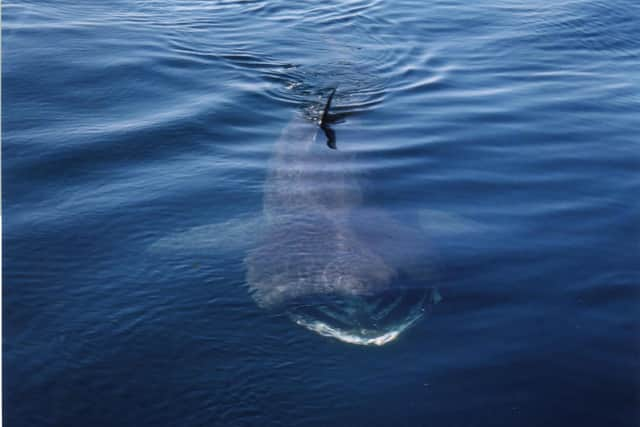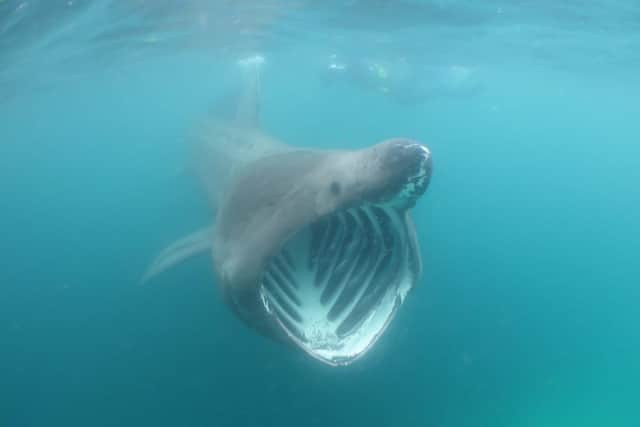Scotland wildlife: 'Exceptional year' for basking shark sightings on north east coast, say marine experts
The number of basking shark sightings on the east coast of Scotland this year has been “exceptional”, marine groups have said.
Up to 67 were seen at one time off the coast of Nairn in the Moray Firth in September, said Ian Hay, a project manager for the East Grampian Coastal Partnership, a not-for-profit organisation which advocates for the wellbeing of the north east coastline.
Advertisement
Hide AdAdvertisement
Hide AdMr Hay, who has spent the last two decades monitoring Scotland’s north eastern coastline, said he has seen basking sharks surface “in ones and twos”, but the numbers this year were “particularly unusual.”


"I had never heard of anything like those numbers before,” he said. “Basking sharks are more often seen on the west coast, so to have that many together off the east coast is really incredible.
"There’s a chance there were more in deeper water as only see the ones feeding at the surface.”
Basking sharks can grow up to ten metres long and have huge mouths that can open as far as a metre wide.


They are filter-feeders, which explains why they are often spotted cruising around with their mouths open to draw in plankton.
They are not considered a threat to humans and have a very passive lifestyle. Globally, the species is endangered, with just 10,000 estimated to be living in the wild.
Dr Kevin Robinson, executive director at the Cetacean Research & Rescue Unit (CRRU), said the increase in sightings in the north sea and the Moray Firth has been due to this year’s warmer weather.
"The extremely good weather with a particularly high sunshine rate has led to more plankton and therefore more sharks,” he said.
Advertisement
Hide AdAdvertisement
Hide Ad

"I have never seen as many plankton in this area before like I did this year. Areas of the north east coast looked like thick soup there was so much plankton.
"To see the quantities we did this year doesn’t happen often.”
CRRU, which monitors 1,200 square kilometres of coast, said there has just been a handful of years in the last two decades where basking shark sightings have reached the numbers they did this year.
A team of researchers looked into where some of the individuals spotted off the north east coast came from and found at least one had travelled from the west coast of Scotland.


"We have noticed that when the west coast has a poor year for sightings with whales and basking sharks, the east coast tends to have a better year,” Dr Robinson said.
"If there is less fish on one side of the country, then it’s likely they move to the other side for feeding.”
The Hebridean Whale and Dolphin Trust recorded 260 reports of basking sharks across Scotland this summer.
A spokesperson said: “Over in the Moray Firth, residents were treated to an incredible number of basking sharks congregating off the coast at Nairn.
Advertisement
Hide AdAdvertisement
Hide Ad"Minimum estimates of at least 40 animals were reported through Whale Track.
“The reports we have seen, indicate these animals are in the area feeding, as well as showing nose to tail behaviours – believed to be connected to courtship.
"With so many of these gentle giants in the area, it is very important for locals and visitors, hoping to get a look at them, to keep a safe and respectful distance, following the Scottish Marine Wildlife Watching Code.”
The unusually higher number of basking shark sightings resulted in a few kayakers being caught off guard. Last month there were reports of a fisherman in a kayak being “circled” by one off the coast of East Lothian.
The increase in sightings prompted interest from members of the public, which led to a flurry of kayakers and paddleboarders venturing out to try and catch a glimpse of the elusive marine creatures.
Several organisations including Police Scotland and East Lothian Council Countryside Rangers have issued safety warnings after receiving reports of people getting too close to and disturbing basking sharks.
Comments
Want to join the conversation? Please or to comment on this article.
